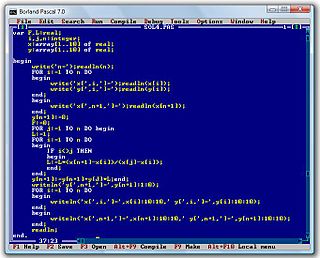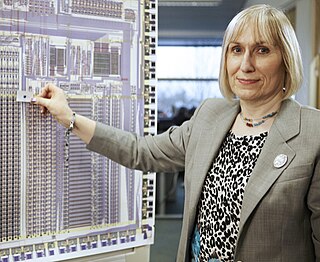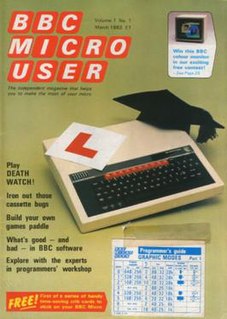History
The magazine was in print for only eight issues of which the last was a double issue. Issues were bi-monthly from November 1979 to February 1981 though the last was actually dated February/April 1981. Initially costing 50p, the price increased to 75p by the fifth edition while the final double edition cost £1.50. The page count started at around 50 though by the fifth edition had reached 100 pages.
The pressure of running both Microdigital and the magazine soon took its toll on the company, and the magazine was put up for sale during the final edition. It was sold to and incorporated into an Apple magazine where all non-Apple content was immediately dropped.
The magazine was intended for an audience of sophisticated and experienced computer users and tackled a wide range of subjects from languages, machine code and CPUs, systems (both large and small), games, programming techniques, astronomy. In many cases the articles went far deeper than those normally tackled by the computer magazines of the day.

The Apple II is an 8-bit home computer and one of the world's first highly successful mass-produced microcomputer products, designed primarily by Steve Wozniak. It was introduced by Jobs and Wozniak at the 1977 West Coast Computer Faire and was the first consumer product sold by Apple Computer, Inc. It is the first model in a series of computers which were produced until Apple IIe production ceased in November 1993. The Apple II marks Apple's first launch of a personal computer aimed at a consumer market—branded toward American households rather than businessmen or computer hobbyists.

Pascal is an imperative and procedural programming language, designed by Niklaus Wirth as a small, efficient language intended to encourage good programming practices using structured programming and data structuring. It is named in honour of the French mathematician, philosopher and physicist Blaise Pascal.

UCSD Pascal is a Pascal programming language system that runs on the UCSD p-System, a portable, highly machine-independent operating system. UCSD Pascal was first released in 1977. It was developed at the University of California, San Diego (UCSD).

A microcomputer is a small, relatively inexpensive computer with a microprocessor as its central processing unit (CPU). It includes a microprocessor, memory and minimal input/output (I/O) circuitry mounted on a single printed circuit board (PCB). Microcomputers became popular in the 1970s and 1980s with the advent of increasingly powerful microprocessors. The predecessors to these computers, mainframes and minicomputers, were comparatively much larger and more expensive. Many microcomputers are also personal computers.

Sophie Mary Wilson is an English computer scientist, who helped design the BBC Micro and ARM architecture.

The Nascom 1 and 2 were single-board computer kits issued in the United Kingdom in 1977 and 1979, respectively, based on the Zilog Z80 and including a keyboard and video interface, a serial port that could be used to store data on a tape cassette using the Kansas City standard, and two 8-bit parallel ports. At that time, including a full keyboard and video display interface was uncommon, as most microcomputer kits were then delivered with only a hexadecimal keypad and seven-segment display. To minimize cost, the buyer had to assemble a Nascom by hand-soldering about 3,000 joints on the single circuit board.

The Kansas City standard (KCS), or Byte standard, is a way of storing digital data on standard Compact Audio Cassettes at data rates of 300 to 2400 bits per second that was first defined in 1976. It originated in a symposium sponsored by Byte magazine in November 1975 in Kansas City, Missouri to develop a standard for storage of digital microcomputer data on inexpensive consumer quality cassettes.

Southwest Technical Products Corporation, or SWTPC, was a US producer of electronic kits, and later complete computer systems. It was incorporated in 1967 in San Antonio, Texas, succeeding the 1964 DEMCO. Around 1990, SWTPC became Point Systems, before ceasing a few years later.

Machine Operating System (MOS) or OS is a discontinued computer operating system (OS) used in Acorn Computers BBC computer range. It included support for four-channel sound and graphics, file system abstraction, and digital and analogue input/output (I/O) including a daisy-chained expansion bus. The system was single-tasking, monolithic and non-reentrant.
The Pascal MicroEngine was a series of microcomputer products manufactured by Western Digital from 1979 through the mid-1980s, designed specifically to run the UCSD p-System efficiently. Compared to other microcomputers, which ran a machine language p-code interpreter, the Pascal Microengine had its interpreter implemented in microcode. So, p-code was, effectively, its native machine language.

A BBC Micro expansion unit, for the BBC Micro is one of a number of peripherals in a box with the same profile and styling as the main computer.

A microprocessor development board is a printed circuit board containing a microprocessor and the minimal support logic needed for a computer engineer to become acquainted with the microprocessor on the board and to learn to program it. It also served users of the microprocessor as a method to prototype applications in products.

Input was a partwork published by Marshall Cavendish in the United Kingdom during 1984 and 1985, covering the subject of home computer programming. This magazine is not to be confused with Input, a website founded by former editor-in-chief of Engadget, and founder of The Verge, Joshua Topolsky.
John Alexander Coll was a British computer specialist. While teaching physics at Oundle school he built a number of computers and was involved in Micro Users in Secondary Education (MUSE). He helped write the functional description for the BBC Computer and played an important role in convincing senior management at the BBC that it could be done. He later wrote the BBC Microcomputer User Guide which was supplied by Acorn Computers with the BBC Micro and appeared regularly on the television programmes Making the Most of the Micro and Micro Live which featured the computer.
The history of the personal computer as a mass-market consumer electronic device began with the microcomputer revolution of the 1970s. A personal computer is one intended for interactive individual use, as opposed to a mainframe computer where the end user's requests are filtered through operating staff, or a time-sharing system in which one large processor is shared by many individuals. After the development of the microprocessor, individual personal computers were low enough in cost that they eventually became affordable consumer goods. Early personal computers – generally called microcomputers – were sold often in electronic kit form and in limited numbers, and were of interest mostly to hobbyists and technicians.

The Micro User was a British specialist magazine catering to users of the BBC Microcomputer series, Acorn Electron, Acorn Archimedes and, to a limited extent, the Cambridge Z88. It had a comprehensive mix of reviews of games, application software, and the latest Acorn computers; type-in programs, a correspondence page offering help with computer problems, and approachable technical articles on programming and the BBC Micro's internals.
XPL0 is a computer programming language that is essentially a cross between Pascal and C. It was created in 1976 by Peter J. R. Boyle who wanted a high-level language for his microcomputer and wanted something more sophisticated than BASIC, which was the dominant language for personal computers at the time.

The British Broadcasting Corporation Microcomputer System, or BBC Micro, is a series of microcomputers and associated peripherals designed and built by the Acorn Computer company in the 1980s for the BBC Computer Literacy Project, operated by the British Broadcasting Corporation. Designed with an emphasis on education, it was notable for its ruggedness, expandability, and the quality of its operating system. An accompanying 1982 television series, The Computer Programme, featuring Chris Serle learning to use the machine, was broadcast on BBC2.

Acornsoft LISP is a dialect and commercial implementation of the Lisp programming language, released in the early 1980s for the 8-bit Acorn Atom, BBC Micro and Acorn Electron computers.















